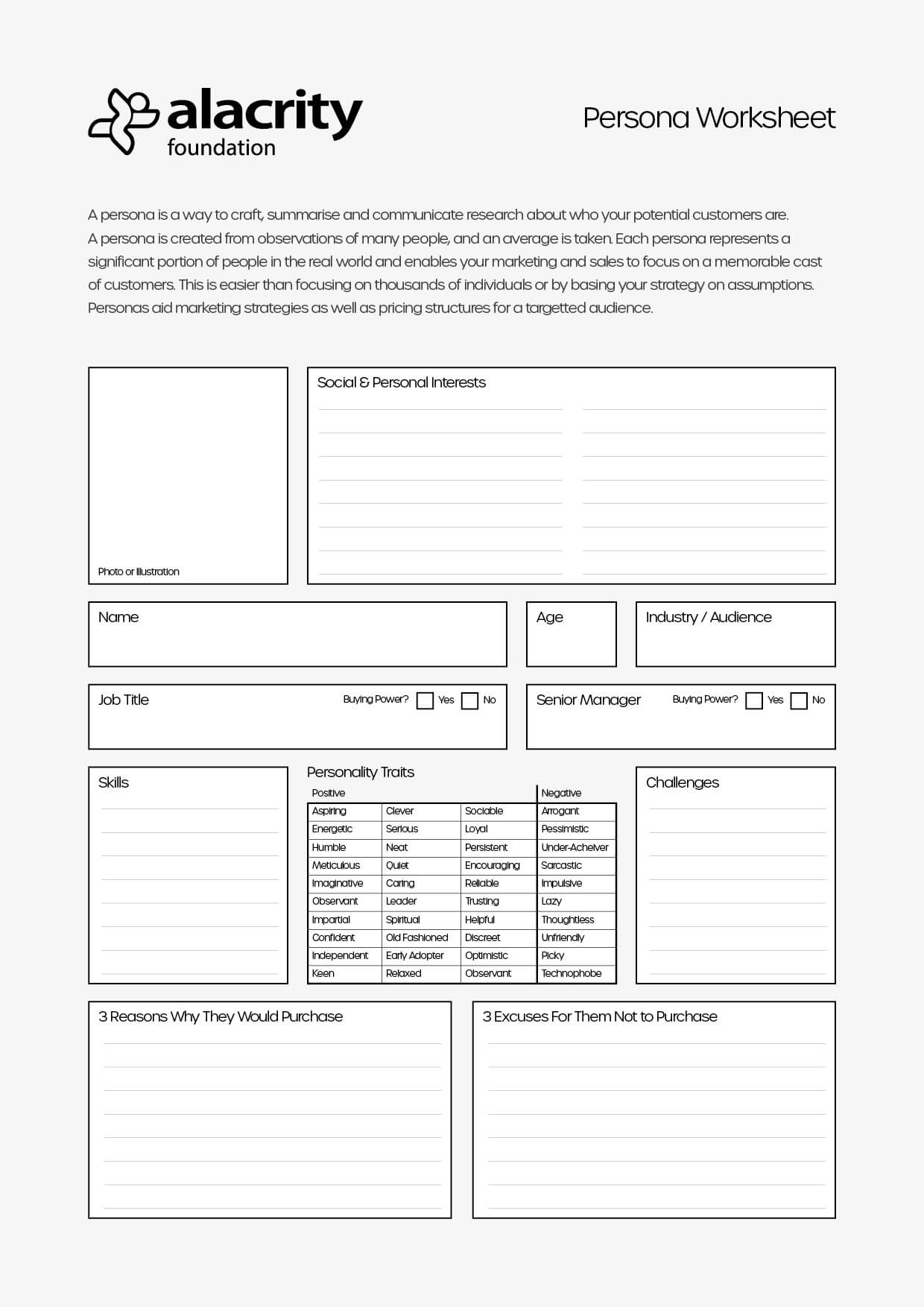Previously we talked about the 4P’s of marketing and promised a Persona guide to help create some. We explained by adding ‘Persona’, the 5th ‘P’ to our marketing mix, we can target our content more effectively.
Before we go over the persona guide template, lets quickly recap.
A Persona is a portrait of a fictional but realistic person. We use a persona as a common reference point to describe a targetted group, audience or individual. We utilise a persona to pull together the characteristics of similar people. These can be their behaviours, personal and social interests, working skills and challenges as well as personality traits. A persona can lead to an understanding of how to speak to your audience. By finding out what pains them, you can deliver a supportive pitch that’s focused on what they need.
It’s essential to create, through a persona guide, a fictional character that contains subtle characteristics. This way, you don’t lose sight of the little details that make people behave in the way they do.
Personas help ensure that your sales and marketing stay focused on people, rather than based on your own assumptions.
Why Use a Persona Guide Worksheet
Using this persona guide, we need to identify what to put in and what to leave out. A persona is often created from several sources, and an average should be taken. Determining what is average though is difficult which is why building using a persona guide in a group can be more productive. Brainstorm ideas in a group and maybe use a persona guide worksheet individually and then see where there are common characteristics across them all.
You need to create a practical guide for a person or group. Identifying an average where characteristics are realistic will better focus your marketing strategy.
In some cases, you may need a persona guide for different parts of your business. If you are B2B, then a persona guide for a purchaser will be required. If you’re B2C, then a persona guide for your ideal end-user will also be useful.
Your personas will identify different target groups that you wish to reach. By understanding preferences, routines, skills and behaviours you can customise your product, sales pitch or marketing to these specific groups.

Downloadable Persona Guide Worksheet PDF >
How to Build Your Personas
Use this template to create a portrait of your ideal target audience. Identify your persona as close as possible to a real person. Do this by adding a name, age and a picture to them. This way you can bring your personas along to development or marketing meetings so as you discuss features you can ask how these decisions may affect your target persona group.
Give your persona social and personal interests. Do they like socialising with friends, the cinema, good food online shopping? What are their personality traits? In our persona guide we list many personality traits and highlight the most important ones. We can then ensure when we speak to them, we speak in a way that they will relate to. They will, therefore, feel comfortable with us and a good rapport is built
In their work, what is their job title and importantly, do they have buying power? Identifying who has buying power will really help you develop your marketing language to better convert customers. If your end user is someone who has to go to a senior manager to purchase it, then that individual will need to quickly convince them that this product will benefit the company. In this scenario, you would need to change your target user into an advocate and influencer before they have made a purchase. This is difficult, but impossible without a persona!
Finally, we like to identify key reasons they would purchase your product and also 3 excuses for them not to. When targetting customers, we need to focus on the reasons why they should buy, and mitigate the excuses not to.
We hope you find this persona guide template useful. Don’t forget that pulling a Persona in as the 5th P in Marketing will better focus and enhance your 4P’s of marketing through Product, Place, Promotion and Price. You can read more about this in our marketing mix article here >

